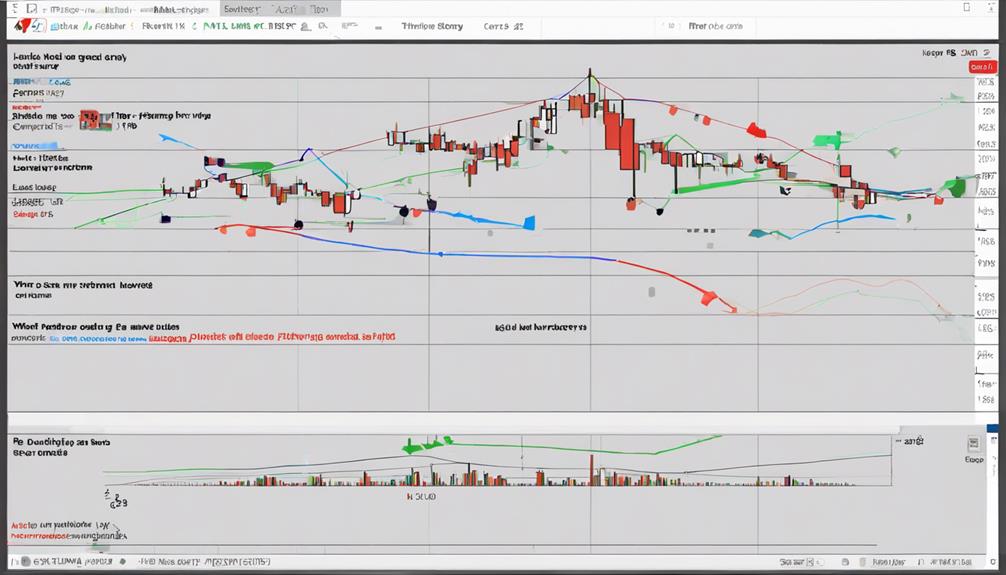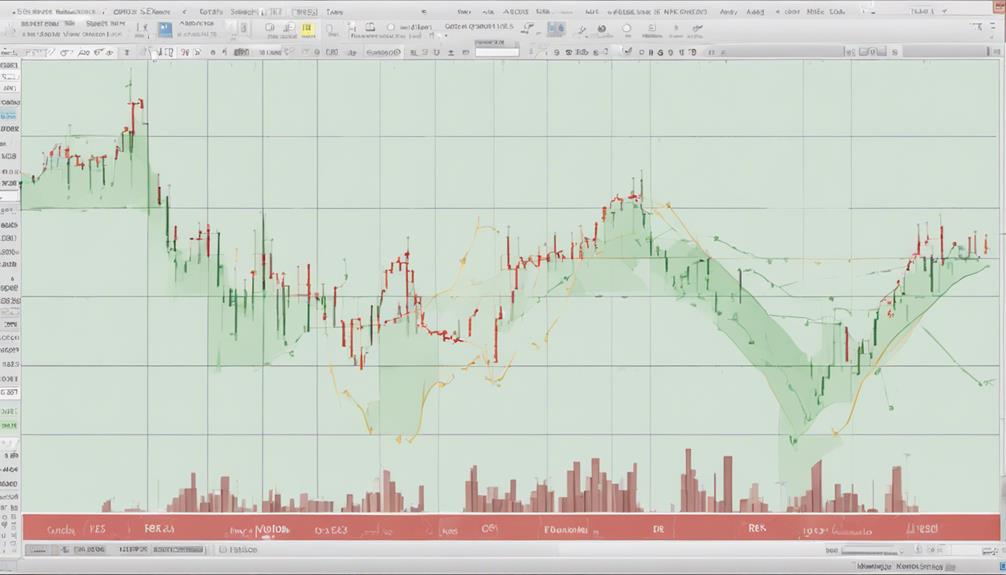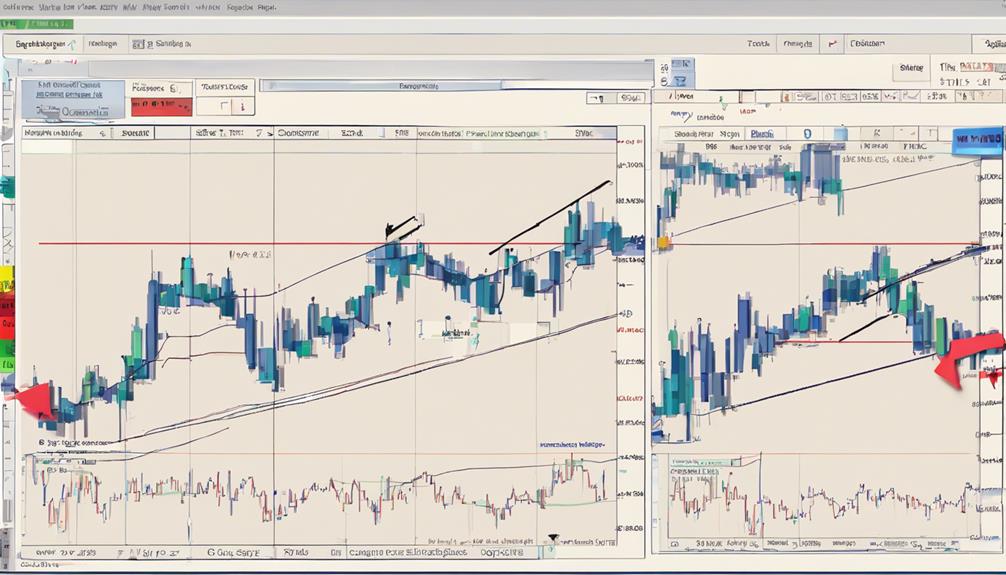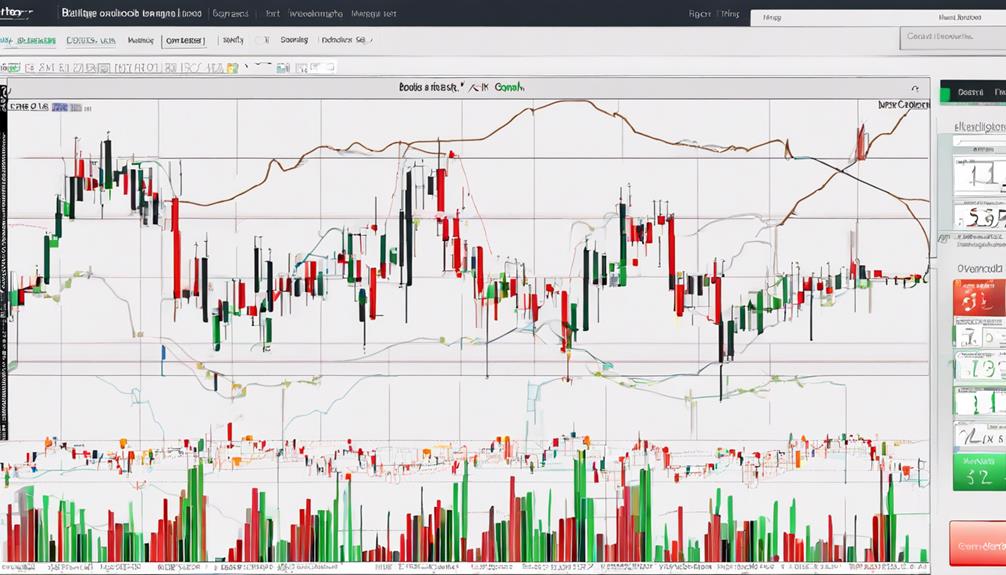When it comes to the Relative Strength Index (RSI), remember that 'the trend is your friend.' Exploring the top 5 insights into RSI can offer you a deeper understanding of market dynamics and potential trading strategies.
From calculating RSI values to utilizing it for trend confirmation and spotting overbought/oversold conditions, each insight provides a piece of the puzzle for successful trading.
Stay tuned to uncover how RSI divergence, reversal signals, and the integration of multiple indicators could further enhance your trading decisions.
RSI Calculation and Interpretation
When calculating the Relative Strength Index (RSI) for market analysis, averaging gains and losses over a specified period is crucial to determine relative strength. The RSI formula derives the Relative Strength (RS) by dividing the average gain by the average loss, providing insight into the market's momentum.
RSI values above 70 signal overbought conditions, indicating a potentially overvalued market, while readings below 30 suggest oversold conditions, signaling a possible undervalued market. The RSI, oscillating between 0 and 100, assists in identifying trend reversals and buy/sell opportunities.
Interpreting RSI values is essential for traders to recognize market conditions accurately, enabling informed decision-making based on whether the market is overbought, oversold, or potentially undergoing a trend reversal.
Using RSI for Trend Confirmation

To confirm trends effectively using the Relative Strength Index (RSI), analyze price momentum and strength within a specified timeframe. Utilize RSI for trend confirmation by:
- Validating Trend Direction: Traders use RSI to confirm uptrends with readings above 50 and downtrends with readings below 50, indicating market direction.
- Identifying Entry and Exit Points: RSI helps pinpoint potential entry and exit points based on trend strength and momentum.
- Enhancing Accuracy with Moving Averages: Combining RSI with moving averages and trend lines improves the precision of trend confirmation and aligns with technical analysis strategies.
Leveraging RSI effectively can assist in making well-informed decisions aligned with market trends.
Identifying Overbought and Oversold Conditions

Identifying overbought and oversold conditions is crucial for traders using the Relative Strength Index (RSI) to anticipate market reversals and extreme price levels.
RSI values exceeding 70 indicate overbought market conditions, signaling potential overvalued assets. Conversely, RSI levels below 30 suggest oversold conditions, indicating possible price reversals.
Traders rely on RSI to pinpoint extreme price levels that may lead to corrections in the market. By assessing RSI readings, traders can better understand market sentiment and prepare for potential trend changes.
Utilizing the RSI to recognize these overbought and oversold conditions provides valuable insights into current market conditions, aiding traders in making informed decisions regarding their trading strategies.
RSI Divergence and Reversal Signals

RSI divergence and reversal signals reveal potential market shifts by highlighting discrepancies between price trends and the Relative Strength Index indicator, aiding traders in strategic decision-making based on technical analysis.
When analyzing RSI divergence, traders should consider the following:
- Bullish Divergence: Price makes lower lows while RSI forms higher lows, indicating a potential upward price movement.
- Bearish Divergence: Price forms higher highs while RSI forms lower highs, suggesting a possible downward price reversal.
- RSI Reversal Signals: Confirmation occurs when the price trend aligns with RSI divergence, providing actionable insights for traders to identify entry and exit points effectively.
Understanding these signals can assist traders in anticipating market shifts and making informed decisions.
How Can I Use Relative Strength Index to Improve my Commodity Trading Strategies?
When it comes to improving your commodity trading strategies, utilizing the relative strength index commodity trading can be extremely valuable. By analyzing the RSI, traders can gain valuable insights into the momentum and strength of a commodity’s price movements, helping them make more informed trading decisions.
Combining RSI With Other Indicators

Combining the Relative Strength Index (RSI) with other indicators enhances the accuracy of trend analysis and aids in identifying potential market shifts with greater precision. Integrating RSI with Moving Average Convergence Divergence (MACD) offers a comprehensive view of trend changes and momentum shifts.
Utilizing Bollinger Bands alongside RSI helps pinpoint overbought/oversold conditions and potential range breakouts more accurately. The synergy of RSI, MACD, and moving averages improves decision-making by confirming signals from multiple indicators.
Adding Fibonacci retracement levels to RSI enhances divergence recognition and bolsters risk management strategies. Aligning RSI with specific timeframes and trading styles while combining it with other indicators boosts signal confirmation and diminishes false signals, ultimately contributing to more informed trading decisions.
Frequently Asked Questions
What Is the 5 Star RSI Strategy?
The 5 Star RSI Strategy is a method that leverages RSI signals along with other indicators to aid in making informed trading choices. It highlights RSI levels over 50 for buy signals and under 50 for sell signals, aiming to align trades with market trends for enhanced accuracy.
What Is the Best Indicator for Rsi?
For the best indicator to use with RSI, consider the Moving Average Convergence Divergence (MACD). Its ability to show trend changes complements RSI's overbought/oversold signals, enhancing your analysis and trading decisions.
How Do You Interpret Relative Strength Index?
To interpret the Relative Strength Index (RSI), analyze values above 70 for overbought conditions and below 30 for oversold conditions. Look for cross signals for buy or sell opportunities. RSI helps predict security performance and validates trends.
What Is the RSI 3 Strategy?
The RSI 3 strategy involves utilizing a 3-period Relative Strength Index for swift trading analysis. This approach pinpoints overbought or oversold conditions in a short timeframe, enabling quick decision-making and capitalizing on immediate market movements.
Conclusion
In conclusion, mastering the Relative Strength Index (RSI) can provide you with a powerful edge in the market. By understanding its calculations, interpreting trends, and utilizing overbought/oversold signals, you can make informed trading decisions.
RSI divergence and reversal signals offer valuable insights into market dynamics. When combined with other indicators, RSI becomes a key tool for successful trading strategies.
So, keep honing your RSI skills and stay ahead in the ever-changing financial landscape.
